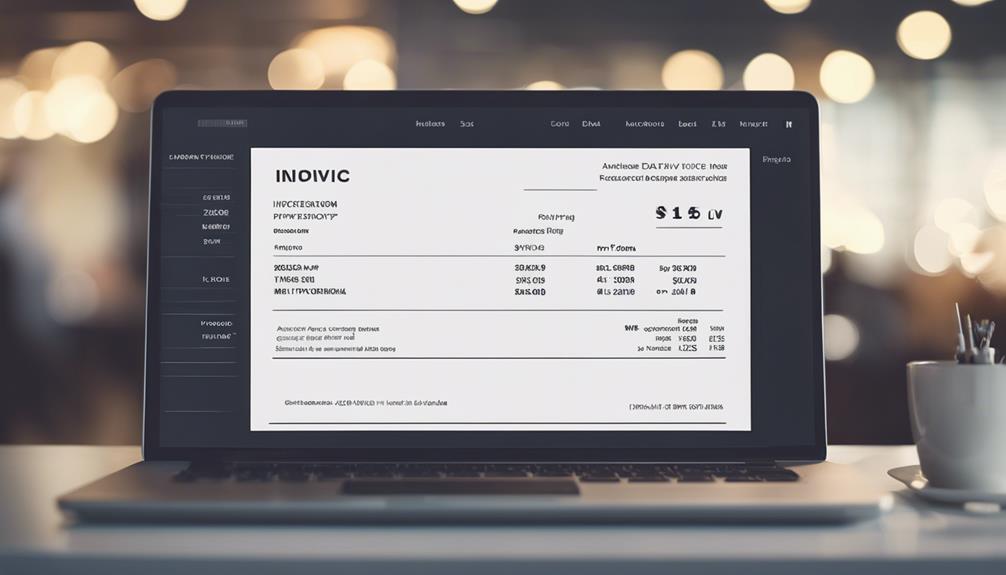When you receive invoices from suppliers, have you ever wondered how invoice processing services work efficiently handle this task? The intricate dance of receiving, verifying, and approving invoices involves a blend of automation, data extraction, and compliance checks to ensure accuracy and efficiency. Understanding this process can shed light on how businesses optimize their financial operations and streamline their workflows.
Workflow of Invoice Processing Services
In the workflow of invoice processing services, incoming invoices are systematically reviewed and verified for accuracy before being approved for payment. Digital transformation plays a pivotal role in streamlining this process by enabling the shift towards paperless solutions. Through digital transformation, invoices are received electronically, eliminating the need for physical paper documents. This shift not only reduces the environmental impact but also enhances efficiency in handling invoices.
Automation in Invoice Processing
Automation enhances the efficiency of invoice processing by reducing manual tasks and accelerating the verification and approval of invoices for payment. By implementing automation in invoice processing, you can achieve significant cost savings and improve time management. Here are three key ways automation can benefit your invoice processing:
- Cost Savings: Automation helps cut down on labor costs associated with manual data entry and processing. By streamlining the invoice workflow, you can reduce errors and avoid late payment fees, ultimately saving money for your business.
- Time Management: Automated invoice processing allows for faster invoice approvals and payments. By automating repetitive tasks such as data entry and invoice matching, you free up valuable time for your team to focus on more strategic activities, improving overall productivity.
- Improved Accuracy: Automation minimizes the risk of human errors that can occur during manual invoice processing. By automatically capturing and validating data, you ensure greater accuracy in your financial records, leading to better decision-making and compliance.
Manual Handling of Invoices
Manual handling of invoices involves the physical processing and management of paper-based invoices, requiring meticulous attention to detail and a systematic approach to ensure accuracy and efficiency in the invoicing process. In contrast to automated systems, manual handling relies on humans to key in data from paper invoices into the accounting systems. This method is time-consuming and prone to errors, as it heavily relies on the precision of data entry personnel.
To address the limitations of manual processing, many companies are transitioning towards paperless systems. These systems aim to digitize the invoice handling process, reducing the reliance on physical paperwork and streamlining the data entry process. By minimizing manual data entry requirements, paperless systems help enhance accuracy, improve efficiency, and reduce the risk of human errors in processing invoices.
Although manual handling of invoices is still prevalent in some organizations, the shift towards paperless systems offers a more efficient and reliable alternative for managing invoices.
Data Capture and Extraction Process
You will explore the intricacies of data capture technology, focusing on how it streamlines the extraction process. Automated extraction methods will be examined for their role in enhancing accuracy and efficiency. Understanding these components is crucial for optimizing invoice processing services.
Data Capture Technology
Through advanced data capture technology, the process of extracting information from invoices is streamlined and optimized for efficiency. This technology, often utilizing OCR technology, plays a crucial role in enhancing document management within invoice processing services. Here’s how data capture technology facilitates the extraction process:
- OCR Technology Implementation: Optical Character Recognition (OCR) technology is employed to convert different types of documents, including invoices, into machine-readable text. This enables swift extraction of relevant data such as invoice numbers, dates, and line items.
- Enhanced Data Accuracy: Data capture technology ensures high levels of accuracy by minimizing manual errors that may occur during manual data entry processes. It helps in extracting information with precision, reducing the likelihood of inaccuracies in the extracted data.
- Faster Processing Speed: By automating the extraction process, data capture technology significantly accelerates the processing speed of invoices. This expedites the overall invoice processing cycle, leading to quicker payments and improved workflow efficiency.
Automated Extraction Methods
Implementing automated extraction methods in invoice processing services revolutionizes the data capture and extraction process, enhancing efficiency and accuracy significantly. Machine learning algorithms play a crucial role in automating the extraction of data from invoices. These algorithms are trained to recognize patterns and extract relevant information such as invoice numbers, dates, and amounts. By continuously learning from new data inputs, machine learning models improve their accuracy over time, reducing the need for manual intervention.
OCR (Optical Character Recognition) technology is another key component of automated extraction methods. OCR technology converts different types of documents, including invoices, into machine-readable text, making it easier to extract essential data accurately. By leveraging OCR technology, invoice processing services can extract data from scanned or digital invoices with high precision, eliminating manual data entry errors.
Incorporating both machine learning and OCR technology streamlines the data capture and extraction process, allowing for faster processing times and increased accuracy in invoice processing services.
Accuracy and Efficiency
Efficiency and accuracy are paramount in the data capture and extraction process of invoice processing services. To ensure error prevention and time savings, the following practices are crucial:
- Quality Control Checks: Implement thorough quality control measures to identify and rectify any errors in the data extraction process promptly. This includes cross-referencing extracted information with the original invoices to guarantee accuracy.
- Automated Validation Algorithms: Utilize advanced automated validation algorithms to cross-verify data fields, reducing the likelihood of errors during the extraction process significantly. These algorithms can also flag discrepancies for manual review, enhancing accuracy.
- Continuous Process Improvement: Regularly review and refine the data capture and extraction process to streamline operations and enhance efficiency. By analyzing performance metrics and feedback, you can identify areas for improvement, ultimately saving time and ensuring accuracy in invoice processing services.
Validation and Approval Steps
The validation and approval steps in the invoice processing system play a crucial role in ensuring accuracy and compliance. The validation process involves scrutinizing the received invoices for errors, discrepancies, or missing information. This step verifies that the data on the invoice aligns with the company’s policies and standards. Once the validation is complete, the invoice moves on to the approval workflow. During the approval workflow, designated personnel review the validated invoices to confirm that the goods or services were received, the prices are accurate, and the terms are met. This stage ensures that only legitimate and authorized invoices are processed for payment.
To streamline the validation and approval steps, some companies utilize automated invoice processing software that can flag potential issues for manual review. This technology helps expedite the validation process by reducing the need for manual intervention in straightforward cases. Efficient validation and approval workflows are essential for maintaining financial accuracy, safeguarding against fraudulent activities, and adhering to regulatory requirements.
Payment and Archiving Procedures
To ensure seamless processing and record-keeping, the payment and archiving procedures are meticulously structured and closely monitored.
- Payment Verification: Once an invoice is approved, the payment verification process begins. This involves cross-referencing the invoice details with the purchase order and receiving reports to ensure accuracy.
- Document Storage: After payment verification, the invoice and all related documents are stored in a secure digital archive. This ensures quick and easy access to the information for future reference or audits.
- Archiving Procedures: The archiving procedures involve categorizing invoices based on various criteria such as vendor, date, or department. This systematic approach helps in organizing the documents effectively and streamlining the retrieval process when needed.
Frequently Asked Questions
How Secure Is the Data During Invoice Processing?
Your data during invoice processing is as secure as Fort Knox! With top-notch data encryption and stringent access control measures in place, rest assured that your sensitive information is safeguarded at all times.
Can Invoice Processing Services Handle Multiple Currencies?
Yes, invoice processing services can handle multiple currencies efficiently. They automate currency conversion for international transactions, ensuring accuracy. This feature streamlines financial processes and reduces manual errors, providing a seamless experience for your business.
Is There a Limit on the Number of Invoices Processed?
You don’t need to worry about hitting a cap on the number of invoices processed. Scalability options ensure flexibility as your needs grow. Keep in mind cost considerations when expanding your invoice processing services.
What Happens if There Are Discrepancies in the Data?
If discrepancies arise in the data during invoice processing, a thorough data reconciliation is conducted. This initiates the resolution process where discrepancies are identified, investigated, and rectified to ensure accurate and error-free invoice processing.
Are There Options for Integrating With Existing Accounting Software?
Thinking about integrating with existing accounting software? You’ll be delighted to hear that our system offers seamless integration compatibility and smooth software synchronization. It’s like peanut butter and jelly – they just go together perfectly!



